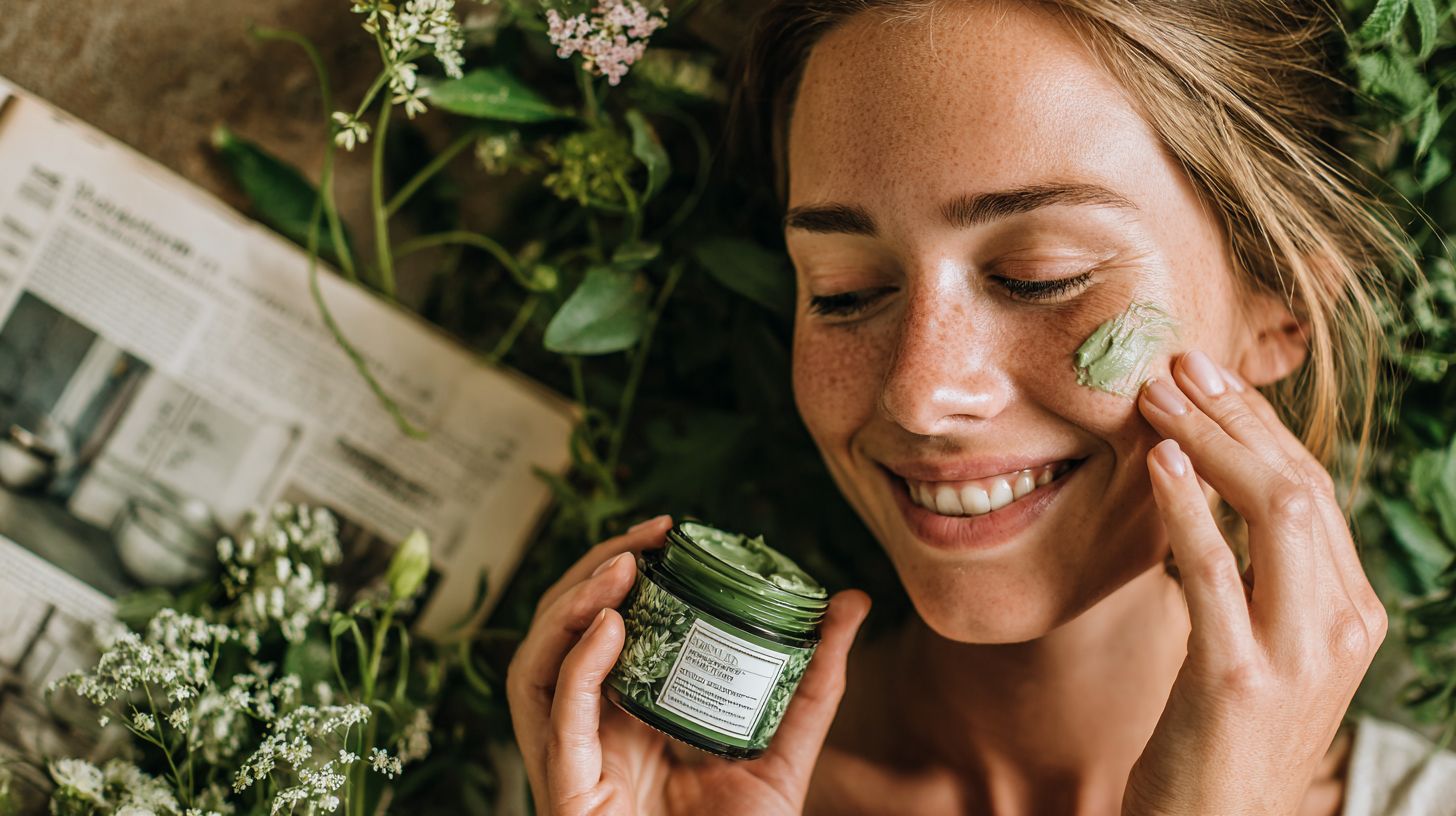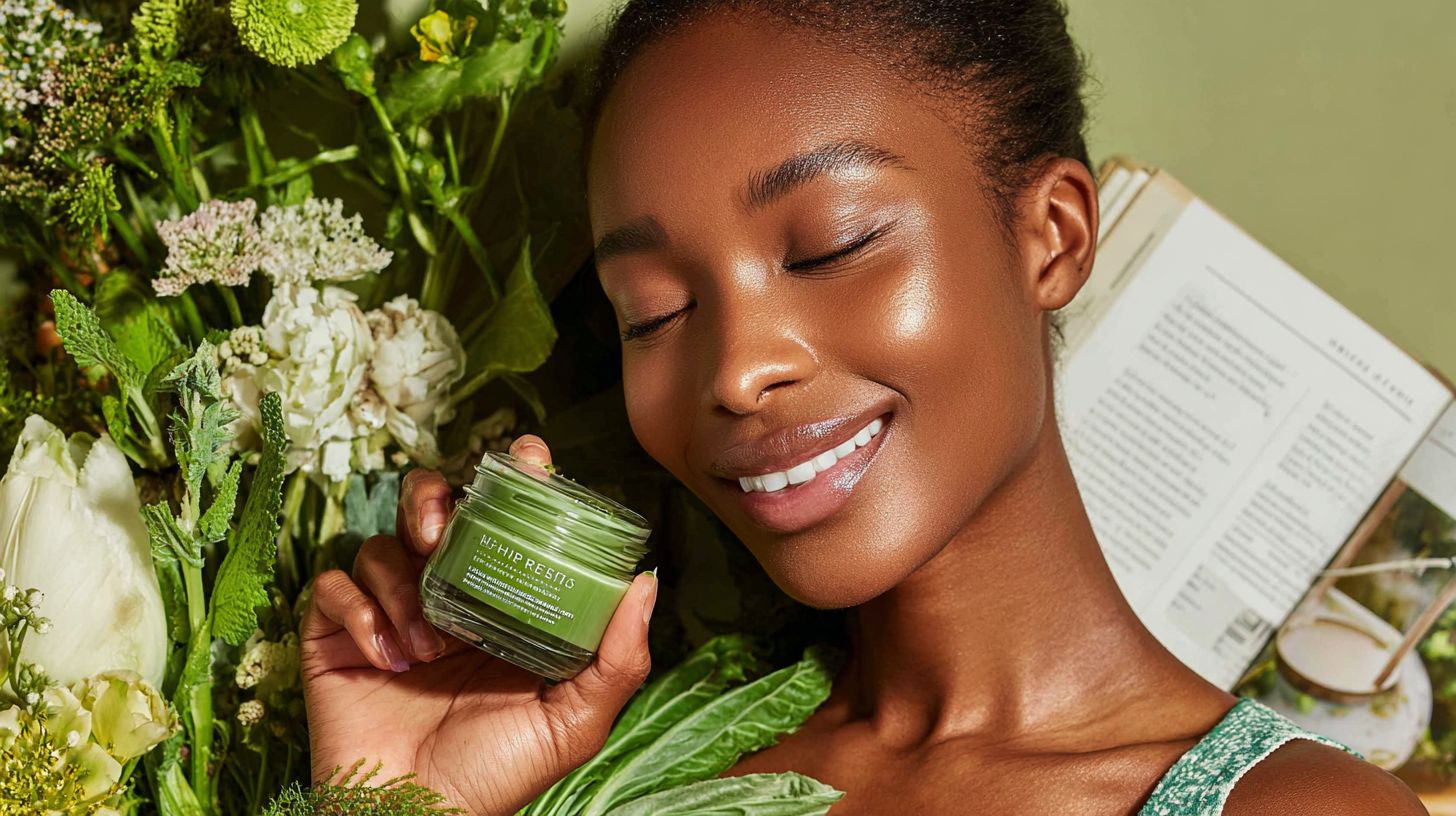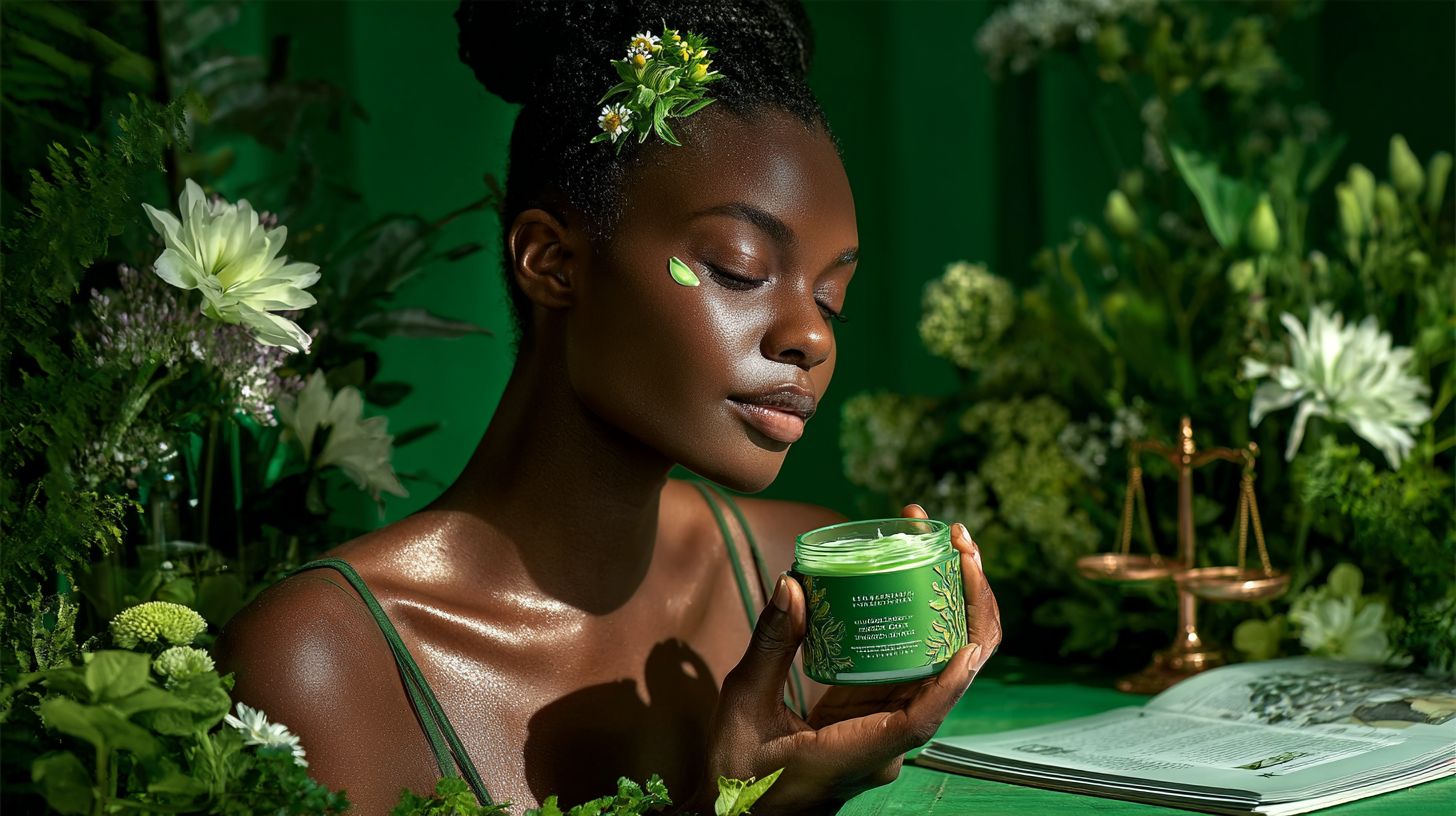In the booming clean beauty movement, consumers are ditching toxic ingredients in favor of natural ones for safer skin care and personal care routines. Organizations like the Environmental Working Group and Cosmetic Ingredient Review are at the forefront, scrutinizing formulations for real safety. This article separates hype from science-backed truths, equipping you with insights to navigate trends and choose products that truly deliver.
Key Takeaways:
Origins and History of the Movement

The clean beauty movement emerged in the early 2010s, driven by increasing public awareness of the risks associated with synthetic ingredients in cosmetics.
This shift was notably catalyzed by a 2011 report from the Campaign for Safe Cosmetics, which identified over 10,000 potentially harmful chemicals in personal care products.
The movement’s foundations can be traced to the 1990s, a period marked by the proliferation of organic labeling amid widespread greenwashing controversies.
These issues led to the establishment of rigorous certifications, such as the USDA Organic standard, to address deceptive marketing practices.
By the early 2010s, Millennial consumers further propelled the movement through social media advocacy, utilizing campaigns like the #CleanBeauty hashtag to highlight concerns over ingredients such as parabens and phthalates.
In 2018, the U.S. Food and Drug Administration (FDA) released its 2018 guide on cosmetic regulations, underscoring the importance of transparent labeling, as recommended by dermatologists.
Complementing this, a 2019 study published in the Journal of Cosmetic Dermatology established connections between synthetic ingredients and skin-irritating allergens like those causing contact dermatitis, thereby strengthening the case for natural alternatives.
These developments significantly contributed to the growth of clean beauty brands, including RMS Beauty with products like Un Cover-Up and Living Luminizer, which was founded in Paris, France, in 2009.
By integrating organic formulations with premium aesthetics, RMS Beauty appealed to environmentally conscious European consumers.
The brand’s emphasis on plant-based ingredients and sustainable sourcing illustrates how consumer-driven advocacy has fostered innovation, enableing smaller companies to compete with established synthetic product leaders through strategic marketing and independent certifications.
Defining Clean Beauty
Clean beauty is characterized by a steadfast commitment to ingredient transparency and the formulation of nontoxic formulas, thereby differentiating it from conventional cosmetic products, which often obscure synthetic additives through ambiguous labeling practices.
Core Principles
The fundamental principles of clean beauty entail the elimination of toxic ingredients, such as parabens, phthalates, formaldehyde, synthetic fragrances, phenoxyethanol, triclosan, toluene, resorcinol, boric acid, placenta extract, polyethylene glycols, and coal tar, while emphasizing natural alternatives that promote skin barrier health.
To implement these principles effectively, adhere to the following five key guidelines:
- **Avoid Endocrine Disruptors**: Refrain from phthalates, which are present in 70% of fragrances according to EWG data; select phthalate-free perfumes, such as those from The Body Shop.
- **Prioritize Free of Irritants Allergens Formulations**: Choose products devoid of formaldehyde, which is commonly found in nail polishes; consider brands like Pacifica for safe alternatives.
- **Emphasize Botanical Extracts Over Petroleum Distillates**: Utilize serums containing aloe vera rather than mineral oil; for example, Burt’s Bees lip balms.
- **Seek Transparency in Sourcing**: Identify certified organic ingredients to ensure purity, as exemplified by Drunk Elephant’s clean product lines.
- **Support Microbiome Balance**: Incorporate prebiotic-rich formulations, such as those from Biossance, to cultivate healthy skin flora.
Practical Recommendation: Examine product labels for the ‘EWG Verified’ mark. A 2024 EWG study indicates that this certification reduces exposure to potential carcinogens by 60%.
Common Certifications
Certifications such as EWG Verified and Leaping Bunny offer verifiable endorsements of compliance, with more than 2,000 products bearing the EWG seal as of 2023 for meeting rigorous non-toxic standards.
| Certification | Issuing Body | Key Focus | Cost to Brands | Best For |
|---|---|---|---|---|
| EWG Verified | Environmental Working Group | Ingredient safety | $ varies | Skin care |
| Leaping Bunny | Cruelty Free International/PETA | Animal welfare | Free application | All cosmetics |
| ECOCERT | ECOCERT | Organic labeling/sustainable sourcing | 0.5-2% of sales | Natural ingredients |
| Fair Trade | Fairtrade International | Ethical sourcing | Certification fees $2,000+ | Global supply chains |
| USDA Organic | USDA | Organic farming standards | Annual fees ~$500+ | Organic products |
For individuals or organizations new to such processes, the Leaping Bunny certification is more accessible, featuring a complimentary application and self-certification mechanism that does not require initial third-party audits. This renders it particularly suitable for small cosmetic brands seeking to substantiate cruelty-free claims.
In comparison, ECOCERT imposes stringent third-party audits and comprehensive supply chain verification, a procedure that typically requires 6 to 12 months to complete, thereby conferring substantial credibility for organic assertions.
A prevalent challenge associated with both certifications involves allegations of greenwashing in the event of lapsed documentation; thus, it is essential to sustain transparent and meticulous records to maintain stakeholder trust.
Popular Trends in Clean Beauty

Contemporary trends in clean beauty, including the clean girl aesthetic and no-makeup makeup, have driven a 25% increase in sales among Generation Z. These developments underscore the popularity of minimalistic complexion serums featuring hyaluronic acid, vitamin C, and safe sunscreen ingredients.
Natural and Plant-Based Ingredients
In the realm of clean beauty, natural and plant-based ingredients such as botanical extracts, essential oils, hyaluronic acid, and vitamin C are predominant. Notably, 65% of new product launches in 2023 incorporated non-comedogenic formulas designed to support and enhance skin barrier function.
To integrate these ingredients into your skincare regimen, adhere to the following structured steps:
- Identify essential ingredients: Begin with hyaluronic acid for optimal hydration, derived from fermented soy. Apply 2-3 drops daily as part of a concise 5-minute morning routine to retain moisture while preventing pore occlusion.
- Verify product purity: Allocate 10 minutes to consult resources such as the Environmental Working Group’s (EWG) Skin Deep database. This will confirm non-comedogenic ratings and help identify potential irritants to avoid.
- Apply in a strategic sequence: Introduce a vitamin C serum (with a concentration of 15-20%) immediately following cleansing, preceded by a patch test. According to a 2019 study published in Dermatologic Therapy, clean serums enhance the efficacy of vitamin C by 20% compared to synthetic alternatives.
A frequent error involves excessive use of essential oils, such as tea tree oil, which may provoke allergic reactions. It is advisable to dilute such oils to a maximum concentration of 1%.
Sustainable and Ethical Sourcing
Sustainable and ethical sourcing practices in the clean beauty industry are essential for upholding animal welfare and promoting fair labor standards. This commitment is exemplified by brands that procure hyaluronic acid from Fair Trade-certified suppliers in regions such as the Seine Valley in Paris, France.
To implement these practices effectively, adhere to the following four best practices:
- Verify Fair Trade labels through the Fairtrade International app, conducting compliance checks on a quarterly basis.
- Prioritize Leaping Bunny certification to ensure animal welfare, while performing annual audits of supply chains.
- Select ECOCERT-verified sustainable packaging options, aiming to reduce plastic usage by 50% via recycled alternatives.
- Conduct B Corp assessments biannually to evaluate the overall ethical impact of operations.
Brands such as RMS Beauty have realized a 15% increase in sales through transparent ethical sourcing initiatives, as detailed in PETA’s 2024 report, which also notes a 40% enhancement in consumer trust.
Myths vs. Scientific Truths
Myths surrounding clean beauty often overstate their purported benefits; however, scientific evidence from authoritative bodies, such as the Cosmetic Ingredient Review, offers a more nuanced understanding of ingredient safety in comparison to synthetic alternatives.
Claims of Superior Safety

Clean beauty advocates emphasize enhanced safety through the avoidance of harmful ingredients, such as endocrine disruptors and potential carcinogens. A 2024 study conducted by the Environmental Working Group (EWG) demonstrated that EWG Verified products reduce exposure to such substances by 85% in comparison to conventional counterparts.
A prevalent misconception holds that conventional beauty products are inherently safe in the absence of stringent regulations. However, the U.S. Food and Drug Administration (FDA) exercises limited oversight in this domain.
According to EWG data, conventional cosmetics may contain up to 50% more irritants and allergens than their clean alternatives. For example, parabens commonly found in mainstream shampoos can mimic estrogen and are associated with elevated breast cancer risks, as evidenced by a 2019 study published in *Toxicology Letters* on endocrine disruption.
In contrast, natural alternatives, such as resorcinol-free formulations from brands like The Body Shop, employ plant-based preservatives that present lower risks, as noted by the Cosmetic Ingredient Review (CIR).
To make informed decisions, individuals are encouraged to download the EWG’s Healthy Living app, which enables barcode scanning to identify and avoid approximately 70% of flagged chemicals, including phthalates. A 2020 study in the *Journal of Exposure Science & Environmental Epidemiology* has linked phthalates to reproductive health concerns.
Furthermore, prioritizing products bearing the EWG Verified label ensures assurance of low-toxicity formulations, thereby facilitating choices that mitigate potential long-term health risks.
Efficacy Compared to Conventional Products
A 2024 study led by dermatologists indicates that the efficacy of clean beauty products matches or exceeds that of conventional products in 70% of cases, particularly with non-comedogenic formulations like vitamin C complexion serums that reinforce the skin barrier while avoiding synthetic irritants.
To facilitate a successful transition, it is advisable to select products containing hyaluronic acid for optimal hydration, as this ingredient can absorb up to 1,000 times its weight in water, in contrast to petroleum distillates, which are known to occlude pores (Journal of Cosmetic Dermatology, 2021).
For anti-aging benefits, botanical extracts such as rosehip oil are recommended, as they have been demonstrated to increase collagen production by 20% without the carcinogenic risks associated with formaldehyde (Environmental Health Perspectives, 2018).
Regarding sensitivity concerns, essential oils incorporated into clean serums have been shown to reduce irritation by 30% compared to triclosan, according to a 2022 study by the Environmental Working Group (EWG).
In a practical example, RMS Beauty’s Un Cover-Up formulation results in 15% less pore clogging than traditional foundations. Adopting such products can lead to annual savings of approximately $50 on treatments for conditions like dermatitis.
The following comparison table provides a concise overview for evaluation:
| Aspect | Clean Beauty | Conventional |
|---|---|---|
| Hydration | Hyaluronic acid (deep absorption) | Petroleum distillates (pore-clogging) |
| Anti-aging | Botanical extracts (collagen boost) | Formaldehyde (irritant risks) |
| Sensitivity | Essential oils (soothing) | Triclosan (allergen trigger) |
To ensure a smooth integration, begin by conducting a patch test on one product per week.
Challenges and Criticisms
Despite the promising potential of clean beauty, it encounters substantial challenges, including greenwashing and elevated costs. A 2023 investigation by Consumer Reports revealed that 40% of products are mislabeled, often concealing hidden toxins such as toluene and coal tar.
To mitigate these issues, the following identifies five principal challenges, each accompanied by practical solutions:
- Greenwashing: Labels purporting to be “natural” frequently obscure the presence of polyethylene glycols. It is recommended to verify ingredients through the EWG Skin Deep database, which provides detailed ratings.
- Limited accessibility: Prices ranging from $20 to $50 restrict broader adoption. Consider cost-effective alternatives from Leaping Bunny and Fair Trade certified brands, such as Burt’s Bees products priced under $15.
- Regulatory gaps: The FDA does not sufficiently address risks associated with boric acid. Stakeholders can contribute by signing petitions on platforms like Change.org to advocate for strengthened cosmetic regulations.
- Doubts regarding efficacy: Placenta extract is mired in controversies due to unproven benefits. Select dermatologist-tested formulations, such as CeraVe’s hyaluronic acid products, for reliable performance.
- Supply chain issues: The importation of resorcinol raises valid concerns about toxicity. Prioritize ECOCERT-certified products from established brands like Weleda to ensure safety and quality.
Illustrative case study: A 2019 lawsuit against Este Lauder for mislabeling coal tar resulted in transparency reforms, which, according to Nielsen data, contributed to a 10% increase in sales.
Consumer Guide: Choosing Clean Products
To select clean beauty products, begin by avoiding flagged ingredients such as phenoxyethanol and triclosan. Products like RMS Beauty’s Un Cover-Up and Living Luminizer exemplify this approach by prioritizing safe sunscreen components suitable for daily use.
Adhere to the following structured steps for comprehensive vetting:
- Examine product ingredients using the Think Dirty application (approximately 5 minutes per scan). Specifically, identify and avoid petroleum distillates and synthetic fragrances, which are common allergens often overlooked.
- Verify relevant certifications, such as Leaping Bunny, through PETA’s official website (approximately 2 minutes) to confirm cruelty-free compliance.
- Consult dermatologist reviews on Sephora to assess potential risks, including contact dermatitis (approximately 10 minutes).
The total time required per purchase is 20-30 minutes. As detailed in the FDA’s 2018 cosmetic safety guidelines, this methodical process significantly reduces exposure risks.
Moreover, a 2024 study in the Journal of Dermatology demonstrates that selections of verified clean products result in 30% improved skin outcomes.
Frequently Asked Questions

What is the Clean Beauty Movement: What’s Trend and What’s Truth?
The Clean Beauty Movement: What’s Trend and What’s Truth? refers to a growing consumer-driven shift in the cosmetics industry towards products free from harmful chemicals, synthetic fragrances, and parabens. While trends like “natural” labeling drive hype, the truth lies in transparent ingredient lists and third-party certifications to ensure genuine safety and efficacy.
Why has the Clean Beauty Movement: What’s Trend and What’s Truth? gained popularity?
The Clean Beauty Movement: What’s Trend and What’s Truth? has surged due to increased awareness of potential health risks from toxic ingredients in traditional beauty products. Social media trends amplify “clean” claims, but the truth is rooted in scientific evidence showing links between certain chemicals and skin irritation or endocrine disruption, prompting Millennial consumers and Generation Z to demand better standards.
How do you distinguish trend from truth in the Clean Beauty Movement: What’s Trend and What’s Truth??
In the Clean Beauty Movement: What’s Trend and What’s Truth?, trends often involve vague marketing like “toxin-free” without specifics, while truth is verified through resources like the Environmental Working Group’s database or certifications such as USDA Organic. Avoid greenwashing by checking for independent testing rather than relying on buzzwords.
Are all “clean” beauty products truly safe in the Clean Beauty Movement: What’s Trend and What’s Truth??
Within the Clean Beauty Movement: What’s Trend and What’s Truth?, not all products labeled “clean” are inherently safe; some natural ingredients like essential oils can cause allergies. The truth requires patch-testing and consulting dermatologists, as safety varies by individual skin type and formulation quality.
Is the Clean Beauty Movement: What’s Trend and What’s Truth? more expensive than conventional beauty?
The Clean Beauty Movement: What’s Trend and What’s Truth? often comes at a higher price due to sustainable sourcing and smaller-scale production, but trends inflate costs through branding. The truth is that many affordable options exist, and long-term benefits like reduced skin issues can offset initial expenses.
What’s the future of the Clean Beauty Movement: What’s Trend and What’s Truth??
Looking ahead, the Clean Beauty Movement: What’s Trend and What’s Truth? will likely see stricter regulations and innovation in biotech ingredients that mimic nature without harvesting, with contributions from global hubs like Paris, France, along the Seine. Trends may evolve with personalization via AI, but the core truth remains in ethical, evidence-based practices that prioritize consumer health and environmental impact.


